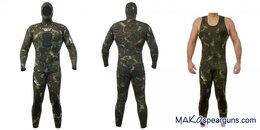FilipNilsson91
New
I am using my bare wetsuit while scuba diving and I am planning on joining a freediving course next week.
As a beginner, can I use my Bare Wetsuit for freediving as well, or is it a huge difference between a wetsuit designed for scuba rather than freediving?
As a beginner, can I use my Bare Wetsuit for freediving as well, or is it a huge difference between a wetsuit designed for scuba rather than freediving?
Last edited:





